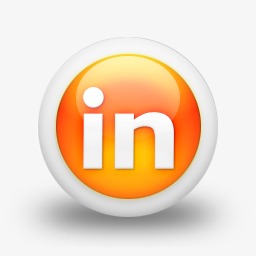 I recently claimed on a post that cold emails and LinkedIn messages are still effective but only if your message is worth reading.
I recently claimed on a post that cold emails and LinkedIn messages are still effective but only if your message is worth reading.
I was asked to give a template. The answer is there’s no magic template.
 So I decided to break down my formula instead.
So I decided to break down my formula instead.
Please remember:
This isn’t a cold sales email. Although with minor tweaks it can be. This was written for innovative, early-stage B2B startups to approach high value leads for research. But it can be tweaked for any industry or sector.
This isn’t the only way to write a cold email.
Some people swear by making it clear exactly what you’re offering upfront. The problem with that approach is that for early-stage startups, your solution will change as you validate and wobb employers iterate. It may not be that appealing to them early on, hence the need to speak to them first.
This is why I’ve found more success in focusing on the person you’re contacting and their problem. Rather than your proposed solution that may not even exist yet.
I hope this helps you as much is has helped me. Let’s get stuck in!
This is for you if:
You need to talk to users about a problem you want to solve
You need to reach high-value leads.
You’re still building your network.
You’re still in the research/validation phase. You need to talk to potential users/customers but you’re not in full sales mode yet.
You’re contacting people in an industry that’s new to you.
This isn’t for you if:
Who you approach doesn’t matter or you need a large number of leads immediately. This research can be time-consuming. If that’s the case, try ads.
Your research will vary widely based on your industry. Here are a few tips:
Be Ready to Take Notes (Important!)
Be ready to take notes on people you research. Make sure you keep on top of this.
For example, you can create a spreadsheet, use Onenote/Evernote or use a CRM.
Keep your old notes after contacting leads. Most industries are quite small at the top and your notes will have a compounding effect. You’ll soon start to connect the dots and see trends and commonalities.
How to Research Leads
Start by Googling their name and company. Make sure you understand their specific role.
Look for industry press releases for their company. Look for any activity that relates to them.
Search for their personal and company Twitter accounts
Look at their Instagram if it’s public
Look through their LinkedIn, see if they know anyone who could make an intro for you
See what roles they’re hiring for
If they’re in charge of sourcing products, research what products they’ve stocked in the past and why. Research those companies and their ethos. See if they are connected to people within those companies too.
Find out what their biggest challenge is as a business. This could be hiring, scaling or finding unique products to source. The secret is to tie their biggest business challenge to your overall vision for fixing their industry. With practice, you’ll be able to accurately see what their biggest challenge is. Most businesses are usually quite open about it.
Let’s take another look at the rough formula for cold emails/LinkedIn messages. We’ll break it down down into 3 paragraphs.
The 3 Step Formula
Hi (first name),
Mention something they’ve achieved recently. Ask for their help.
Ask for a low commitment from them.
Sign off.
Mention something you’ve researched about them then. Then ask for their help.
You could congratulate them on opening a new location, a fundraise, a new product.
You’re praising but also showing you’ve done your research and you think they are credible enough to be able to help you too.
You could mention someone on their level that you’ve recently met, who they know.
You could mention someone who has made an intro/suggested you contact them (if that person hasn’t already)
You can adjust your tone based on their personality or the brand of their business. Formal emails can be offputting. Use your research to guide your actions on this.
Tip: I would often go into a business as a customer, find a moment to ask for the owner/ops director’s name and contact details without being pushy. Then write an email there and then to that person, saying the name of their employee who suggested you contact them.
Don’t ‘hope’ or ‘pray’ that your email ‘finds them well’ or ‘in good health’ etc. There’s no need. It’s a waste of precious text. If you don’t know them, it comes across as disingenuous.
Aim for 2 sentences max. 30 Words Total
Lay down your vision for solving a painful and widely felt problem in their industry.
Show that you understand the most painful business problem they’re experiencing. A problem that is also holding the industry back. A strong vision is often the most powerful tool an entrepreneur has. In a few words, you can open the eyes of your prospect to a better future, in a way they hadn’t thought about.
Make your vision solve a painful problem and sound exciting. Even if it’s in the most mundane part of a business.
Make them feel that they and their advice will be so important that you need them to be involved in helping shape your solution.
You should keep this paragraph very brief. The skill in cold emails is saying as much as possible, in as few words as possible. Make them curious so they want to hear more – https://www.wired.com/2010/08/the-itch-of-curiosity/
You should constantly be refining and slimming this paragraph down. It’s arguably the most important.
If you have your website link in your email sig. Make sure the messaging on your landing page, matches the messaging in your email.
This is a powerful technique for getting a response if you’re yet to define a solution. The intrigue it generates. Again this isn’t a sales email. It’s for early-stage businesses that are simply trying to nail a meeting with an important lead to get feedback, validation or conduct a user interview.
Don’t go into too much detail
Don’t make unrealistic claims
Don’t name your company within the paragraphs. They’ll see it in the email sig and in your email address before they opened the email. It’s optional but really not necessary.
Length:
Aim for one sentence, two max. 20 words.
Goal:
A very low commitment ask.
Do:
Know exactly what your goal is before contacting anyone. It’s normal for this to be slightly different for each person you contact.
If you’re emailing: Do you want knowledge? An intro? To be able to send a deck for feedback or to be passed on to someone else? Be specific.
If on LinkedIn: You’re usually asking for their email address to send more info. So your message can be even shorter. It may feel like an extra step but they’ll be expecting your email. I’ve found my conversions were much higher doing this. There’s also an element of intrigue and respect that you’ve asked permission before sharing your ask.
If you’re arranging a call/meeting, then offer a time and day that you think they’ll be free based on your research. For example, in the hospitality industry, there are days that ops directors won’t take meetings due to the nature of their work.
Do your research. For example, if you know from your research where their office is, mention grabbing a coffee a street away, etc.
Don’t:
Don’t ask for any more than of their time than you need. Be specific in your request.
Don’t make them do the work of arranging the time, place, day, etc.
Understand the basics of copywriting. Write to Sell is a great primer for beginners. – Write to Sell, Andy Maslen
Don’t obsess about copywriting, you don’t need to become an expert. Many copywriting tricks and tips will take you off course. Keep it simple.
Edit, edit and edit again. Cut out weasel words. Hemingway is an excellent tool for this – http://www.hemingwayapp.com/
Use a thesaurus to find shorter words. Count the syllables in your sentences -https://syllablecounter.net/
Check your writing for it’s reading grade level. Simple yet highly effective – https://readabilityformulas.com/free-readability-formula-tests.php
Spell check everything you write – Grammarly.com
Track and organize your emails with a CRM – Hubspot allows you to move contacts across a Pipeline and track email opens. This is extremely useful when you’re contacting a lot of people. There are other tools but choose cautiously – www.hubspot.com
You can send your personalized emails faster using Woodpecker. You can use your existing email account and it’ll schedule emails so you don’t get flagged by Gmail. It’s highly effective and worth the price. Good for those starting out, with a free trial too – www.woodpecker.co
Read your email out loud. If it sounds awkward, it’ll probably read awkwardly too.
Aim for clarity. Don’t use industry jargon even if you think they’ll understand it.
The word limits included are for you to focus on keeping it brief. You may need to write more but beware of fluff. Keep it to the essentials.
If you get a reply, you can include more details on the second email. Even pre-launch, an attractive deck on your reply can go a long way to building credibility and intrigue.
When you get a meeting, make sure you ask questions properly. The Mom Test is a great starting point – http://momtestbook.com/
Why am I not getting any replies?
If your email is succinct, punchy and persuasive but you’re still not getting feedback, it’s possible that the problem you’re describing just isn’t interesting to them.
One quick solution until you land on messaging that resonates is to include fewer details. Just mention you want to solve a painful problem their industry faces. Add more detail about the specific problem as you get more feedback and understand the industry better.
How can I refine my message when I’m not getting any replies?
Great cold emails require a holistic approach of integrating everything you learn through your research, conversations, meetings, and rejections.
I once lucked out by sitting a table across from the national operations director for a large restaurant chain. I knew the head office was near that restaurant and would work in there some mornings on my laptop.
I overheard a conversation and politely waited until he’d finished his meeting then asked him for a couple of minutes of his time. Those 3-4 minutes gave me an invaluable insight into a major purchasing decision they were looking to make and exactly what their goals and red lines were.
This info was pure gold in understanding the problems of chains of his size. It was almost the polar opposite of what slightly smaller chains would require. I already had a good pitch from my cold emailing but I was able to tweak my approach for companies of a similar size who were facing similar challenges. My conversions were beyond what I could’ve hoped for.
Tip:
As you contact more people, you’ll see that many of them face similar challenges. You can save time by segment them by characteristics that aren’t always obvious when you start. You can then use this knowledge to more accurately predict what messaging will work on future leads.
I’ve got a template that’s converting well, should I change it?
After around 10-20 replies, you should have a good idea of what resonates and what doesn’t. Even more so after you meet the people you’ve contacted in person or speak on the phone.
So take notes during your meetings. Listen to what they found exciting, what they’re really struggling with. Refine and improve. There’s no reason not to be an expert at this quickly.
Always ask for intros when you make a successful contact and you’ve earnt their trust/intrigue. I can’t stress this enough.
Don’t get stuck using the same template, keep iterating, Even if the improvements become marginal gains.
What conversion rates should I expect?
I’d often get open rates as high as 90%. Replies would change for each mini-campaign, starting lower and getting significantly higher as I refined the email but always over 50%.
My email rates always declined rapidly when I got overconfident and did less research. Or when I was less picky about qualifying leads to contact.
After refining your message and building up a good database of research, it becomes rare not to get a reply. This will obviously change by industry and how attractive your vision/the problem you want to solve is.
Qualifying the right type of people to speak to will drastically improve your conversion rates. When you understand the industry, you’re able to predict what messaging will resonate with a certain type of prospect in a business at a certain stage, a certain size or facing a certain challenge. Your research will be vital for this. The clearer you can organize it and find insights from it, the better.
How often do I follow up?
There’s a lot of different thinking about follow-ups. The standard rule is that you should keep following up until you get a response. If your startup takes off, you’ll likely bump into some of the leads you’re contacting one day. Be persistent but respectful.
You should wait at least 3 days before your first follow up. Your follow up emails should be short and easy for them to take action.
So that’s it! There’s no secret template. It’s hard work, at first anyway. Once you get stuck in, it becomes fun. If you do your homework and iterate relentlessly, you’ll see results!
Free feedback
I’m happy to give feedback via chat if anyone has any drafts they want looked at. I don’t have anything to promote but I’m quietly working on a unique way for anyone to apply the wisdom of successful founders without books, videos or podcasts. I’d love to talk to anyone who’s interested in giving feedback on the beta.


 I recently claimed on a post that cold emails and LinkedIn messages are still effective but only if your message is worth reading.
I recently claimed on a post that cold emails and LinkedIn messages are still effective but only if your message is worth reading. So I decided to break down my formula instead.
So I decided to break down my formula instead.
 A very common concept of law colleges is to make students apply for legal internships. The procedure is simple. You fill in an application, you are interviewed and if you are chosen, you intern. Now the thing about legal internships –
A very common concept of law colleges is to make students apply for legal internships. The procedure is simple. You fill in an application, you are interviewed and if you are chosen, you intern. Now the thing about legal internships – 
 LinkedIn is one of the most important online tools for marketing your professional services. However, only a very small percentage of users post effective summaries of their business on their LinkedIn profile.
LinkedIn is one of the most important online tools for marketing your professional services. However, only a very small percentage of users post effective summaries of their business on their LinkedIn profile. Now, if you’re a self-employed professional with any online savvy, you’ve probably heard of some of these people. For your summary, mention the kinds of people or organizations you’ve worked with and also a list of some of your clients.
Now, if you’re a self-employed professional with any online savvy, you’ve probably heard of some of these people. For your summary, mention the kinds of people or organizations you’ve worked with and also a list of some of your clients.